From the front lines to the flight deck, from code-breaking rooms to space missions, women have been rewriting the story of the U.S. armed forces for generations. They’ve driven trucks, led troops, commanded shuttles and changed the course of technology and history — often while breaking barriers few thought possible. Here are seven remarkable women whose service, courage and brilliance left a lasting mark on the military and the nation.
Ranging from the Civil War to the modern age and representing all services, these women broke barriers, made a difference and became role models.
Bea Arthur

Best known for her roles on the popular television shows "Maude" and "The Golden Girls," the late Bea Arthur was also once a truck driver in the Marine Corps. She was one of the first members of the Women's Reserve, and aside from driving military trucks, Arthur was also a typist.
She enlisted at the age of 21 in early 1943 under her original name, Bernice Frankel. Appraisals from her enlistment interviews described her conversation as “argumentative” and her attitude and manner as “over aggressive” -- fitting, given the cantankerous characters she would play later in life. In a handwritten note, the Marine interviewer remarked, “Officious -- but probably a good worker -- if she has her own way!”
Arthur was stationed at Marine Corps and Navy air stations in Virginia and North Carolina during her career, and she was promoted from corporal to sergeant to staff sergeant. She was honorably discharged in September 1945, married a fellow Marine (Private Robert Aurthur) shortly afterward, and changed her name to Bea Arthur before enrolling in the Dramatic Workshop of the New School in New York in 1947.
After a successful Broadway career that included a Tony award, Arthur made a splash as "Cousin Maude" in the classic TV series "All in the Family" in the early 1970s. She went on to star in her own sitcom and cement her celebrity fame and status as a gay icon in the long-running show "Golden Girls."
Army Gen. Ann E. Dunwoody
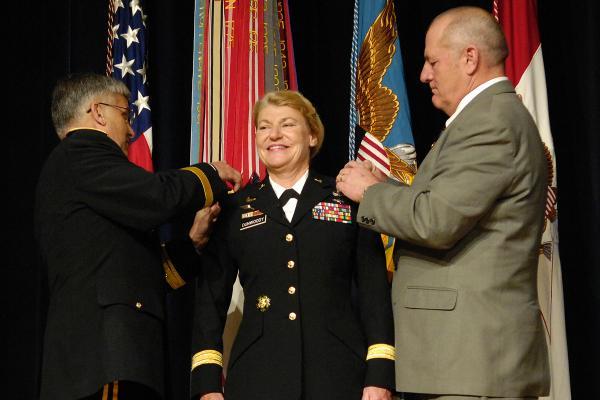
The first woman to serve as a four-star general in both the Army and the U.S. armed forces, Gen. Ann E. Dunwoody joined the Army in 1974 and was commissioned as a second lieutenant in the Women's Army Corps in 1975. Her first assignment was as supply platoon leader, 226th Maintenance Company (Forward, Direct Support), 100th Supply and Services Battalion (Direct Support), Fort Sill, Oklahoma. Her biggest impact was as commander of the Army Materiel Command, or AMC, one of the largest commands in the Army, employing more than 69,000 employees across all 50 states and 145 countries.
"It was Ann's most recent role, as commander of the AMC, in which she unified global logistics in a way [that has never] been done," said Chief of Staff of the Army Gen. Ray Odierno. "She capitalized AMC's fundamental logistics functions to maximize the efficiency and services they provided of supply, maintenance, contact support, research and development, base and installation support, and deployment and distribution."
Dunwoody connected AMC not only to the Army, but ensured the joint force was always ready and supplied as well.
"From the very first day that I put my uniform on, right up until this morning, I know there is nothing I would have rather done with my life," she said. "Thank you for helping me make this journey possible."
At her retirement ceremony in 2012, Dunwoody said, "Over the last 38 years, I have had the opportunity to witness women soldiers jump out of airplanes, hike 10 miles, lead men and women, even under the toughest circumstances. And over the last 11 years, I've had the honor to serve with many of the 250,000 women who have deployed to Iraq and Afghanistan on battlefields where there are no clear lines, battlefields where every man and woman had to be a rifleman first. And today, women are in combat; that is just a reality. Thousands of women have been decorated for valor, and 146 have given their lives. Today, what was once a band of brothers has truly become a band of brothers and sisters."
Grace Murray Hopper
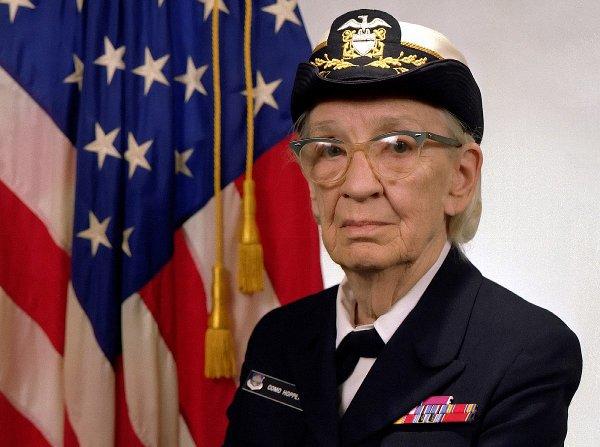
Known as "Amazing Grace," Commodore Hopper's importance in U.S. naval history is apparent everywhere you turn: a destroyer was named after her (USS Hopper, DDG-70), as was the Cray XE6 "Hopper" supercomputer. As founder of the COBOL programming language, a precursor to many of the software code approaches of today, her work is legendary among computer scientists and mathematicians.
In 1943, during World War II, she joined the United States Naval Reserves. She was assigned to the Bureau of Ordinance Computation Project, where she became the third programmer of the world's first large-scale computer called the Mark I. When she saw it, all she could think about was taking it apart and figuring it out.
"That was an impressive beast. She was 51 feet long, eight feet high and five feet deep," Hopper said.
She mastered the Mark I, Mark II and Mark III. While trying to repair the Mark I, she discovered a moth caught in a relay. She taped the moth in the log book, and from that, she coined the phrase "a bug in the computer." During her career, she mastered the UNIVAC I, the first large-scale electronic computer, and created a program that translated symbolic math codes into machine language. This breakthrough allowed programmers to store codes on magnetic tape and recall them when they were needed -- essentially the first compiler.
In 1966, Hopper retired from the Naval Reserves as a commander, but she was called back to active duty one year later at the Navy's request to help standardize its computer programs and their languages. She was promoted to captain in 1973 by Adm. Elmo Zumwalt Jr., chief of naval operations. And in 1977, she was appointed special adviser to the commander, Naval Data Automation Command (NAVDAC), where she stayed until she retired.
In 1983, a bill was introduced by Rep. Philip Crane (D-Ill.), who said, "It is time the Navy recognized the outstanding contributions made by this officer recalled from retirement over a decade and a half ago and promote her to the rank of commodore." Crane became interested in Hopper after seeing her March 1983 "60 Minutes" interview.
He'd never met Hopper, but after speaking with several people, he was convinced she was due the added status of being a flag officer. The bill was approved by the House, and at the age of 76, she was promoted to commodore by special presidential appointment. Her rank was elevated to rear admiral in November 1985, making her one of few female admirals in the history of the United States Navy.
By the time of her death in 1992, Hopper was renowned as a mentor and a giant in her field, with honoree doctorates from more than 30 universities. She was laid to rest with full military honors in Arlington National Cemetery.
Col. Eileen Collins
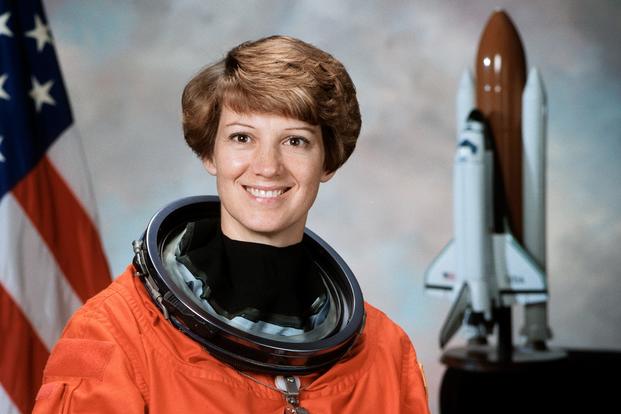
As a young child, Eileen Collins loved to sit with her dad in the family car and watch airplanes take off and land. The roar of the powerful engines and the grace of the aircraft as they seemed to float in the air always held excitement and enchantment for the young daughter of Irish immigrants. That love of flying would lead the Air Force colonel to be honored as the first woman to command a space shuttle mission, STS-93, in July 1999, and place the NASA astronaut into the history books.
Col. Collins joined the Air Force in 1979 and served as a T-38 flight instructor until 1982. From 1983 to 1985, she was a C-141 Starlifter aircraft commander and instructor pilot. She was assistant professor of mathematics and T-41 instructor pilot at the Air Force Academy from 1986 to 1989 and graduated from the Air Force Test Pilot School in 1990.
While attending the Test Pilot School, Collins was selected by NASA for the astronaut program and became an astronaut in July 1991. In 1995, Collins became the first woman to pilot a space shuttle, and in 1999, she was the first female shuttle commander. She has more than 5,000 hours in 30 types of aircraft and has spent more than 537 hours in space.
"I was very excited and happy," said Collins, who applied for both a pilot and mission specialist slot with NASA. "But even though I'll remember that day for the rest of my life, it really didn't sink in until I graduated. I knew that there had never been a woman shuttle pilot before. Now, I'd be the first."
After four successful shuttle missions, Collins retired in 2006.
"I do miss being in space," she said, "but I flew four times, and all four missions were very busy because you're constantly working and under stress. You have a mission, your boss is the people of the country and you don't want to disappoint the people. Usually toward the end of the mission, you can let your hair down a little bit, because the primary mission's done and everything is put away. That was when you could put your face against the glass, stretch out your arms and you don't even see the ship around you, just the Earth below, and you feel like you're flying over the planet."
Harriet Tubman
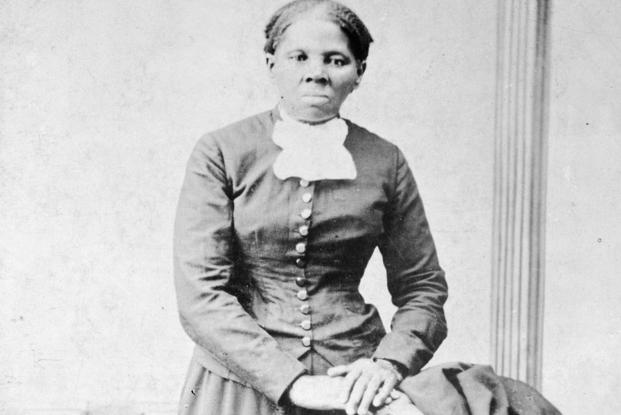
One of the most celebrated heroines in American history, Harriet Tubman is best known for ushering slaves to freedom through the Underground Railroad in the 1850s. But not everyone knows that Tubman, who escaped slavery in 1849, set up a vast espionage ring for the Union during the Civil War. She served as a cook, a nurse and even a spy for the Union during the Civil War, and she also was the first woman in American history to lead a military expedition.
In one of her most dramatic and dangerous roles, Tubman helped Col. James Montgomery plan a raid to free slaves from plantations along the Combahee River in South Carolina. Early on the morning of June 1, 1863, three gunboats carrying several hundred male soldiers, along with Harriet Tubman, set out on their mission.
Tubman had gathered key information from her scouts about the Confederates' positions and knew where they were hiding along the shore. She also found out they had placed torpedoes -- barrels filled with gunpowder -- in the water. Ultimately, her group freed about 750 slaves -- men, women, children and babies -- and did not lose one soldier in the attack.
Reporting on the raid to Secretary of War Edwin Stanton, Brig. Gen. Rufus Saxton said, “This is the only military command in American history wherein a woman, Black or white, led the raid, and under whose inspiration it was originated and conducted.” Sadly, Tubman was paid only $200 during her three years of service and was denied a pension for her spy work.
Elsie S. Ott

During World War II, the U.S. Army Air Corps pioneered military medical care through the development of air evacuations of wounded personnel. Contributing to this was 2nd Lt. Elsie S. Ott, a flight nurse on the first intercontinental air evacuation flight that demonstrated the potential of air evacuation. Born in 1913 in Smithtown, N.Y, Ott attended Lenox Hill Hospital School of Nursing in New York City after completing high school.
After several positions in area hospitals, Ott joined the Army Nurse Corps in September 1941. She was commissioned as a second lieutenant soon after and had assignments to Louisiana and Virginia before being sent to Karachi, India. It was during this assignment that she would participate in the first air evacuation. Originating from Karachi, patients were evacuated to Walter Reed hospital in Washington, D.C.
Ott was assigned to the flight with only 24 hours' notice. Prior to this, she had no flying experience and had never flown before. She gathered blankets, sheets and pillows for the trip, but the only medical equipment available to her was nothing more than a first aid kit. No medical professional screened the patients who were to fly with Ott, and she and a sergeant with a medical background were the only people on board to care for patients.
The plane left Karachi with five wounded personnel on Jan. 17, 1943. Of those five, two were paralyzed from the waist down, one suffered from tuberculosis, another had glaucoma and the fifth was suffering manic-depressive psychosis. After stops along the way for refueling, the plane reached its destination nearly a week after beginning -- normally a three-month trip by ship.
Ott knew that her report on the trip would be crucial for further planning, and she immediately sat down to make notes for future flights. Among the suggestions she listed were the need for oxygen, more wound-dressing supplies, extra coffee and blankets. She also noted that wearing a skirt was impractical for this kind of duty.
Two months later, Ott received the first U.S. Air Medal, the first given to a woman in the U.S. Army, for her role in the evacuation flight. She would later be promoted to captain before being discharged in 1946. Nearly 20 years later in 1965, Ott was selected to christen a new type of air ambulance: the C-9 Nightingale.
Sarah Emma Edmonds
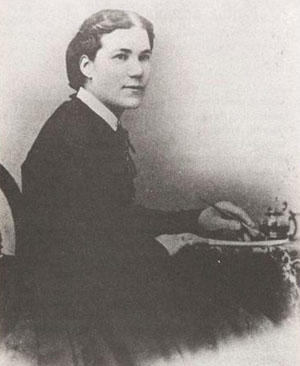
Union soldiers during the Civil War knew a comrade known as Franklin Flint Thompson, but in reality, Thompson was really a woman -- Sarah Emma Edmonds -- and one of the few females known to have served during the Civil War. Edmonds was born in Canada in 1841, but desperate to escape an abusive father and forced marriage, she moved to Flint, Michigan, in 1856, where she discovered that life was easier when she dressed as a man. Compelled to join the military out of a sense of duty, she enlisted in the 2nd Michigan Infantry as a male field nurse.
As "Franklin Flint Thompson," Edmonds participated in several battles that took place during the Maryland Campaign of 1862, which included the Second Battles of Manassas and Antietam. As a field nurse, she would be dealing with mass casualties, especially at Antietam, which is known as one of the bloodiest battles of the Civil War. She is also said to have served as a Union spy and infiltrated the Confederate army several times, although there is no official record of it.
One of her alleged aliases was as a Southern sympathizer named Charles Mayberry. Another was as a Black man named Cuff, for which she disguised herself using wigs and silver nitrate to dye her skin. And yet another was as Bridget O'Shea, an Irish peddler selling soap and apples.
Malaria eventually forced Edmonds to give up her military career, since she knew she would be discovered if she went to a military hospital, and her being listed as a deserter upon leaving made it impossible for her to return after she recovered. Nevertheless, she still continued serving her new country, again as a nurse, though now as a female one at a hospital for soldiers in Washington, D.C.
In 1865, Edmonds published her experiences in the bestselling "Nurse and Spy in the Union Army," and went on to marry and have children. But her heroic contributions to the Civil War were not forgotten and she was awarded an honorable discharge from the military, a government pension and admittance to the Grand Army of the Republic as its only female member.
Related Video:
Want to Know More About the Military?
Be sure to get the latest news about the U.S. military, as well as critical info about how to join and all the benefits of service. Subscribe to Military.com and receive customized updates delivered straight to your inbox.















